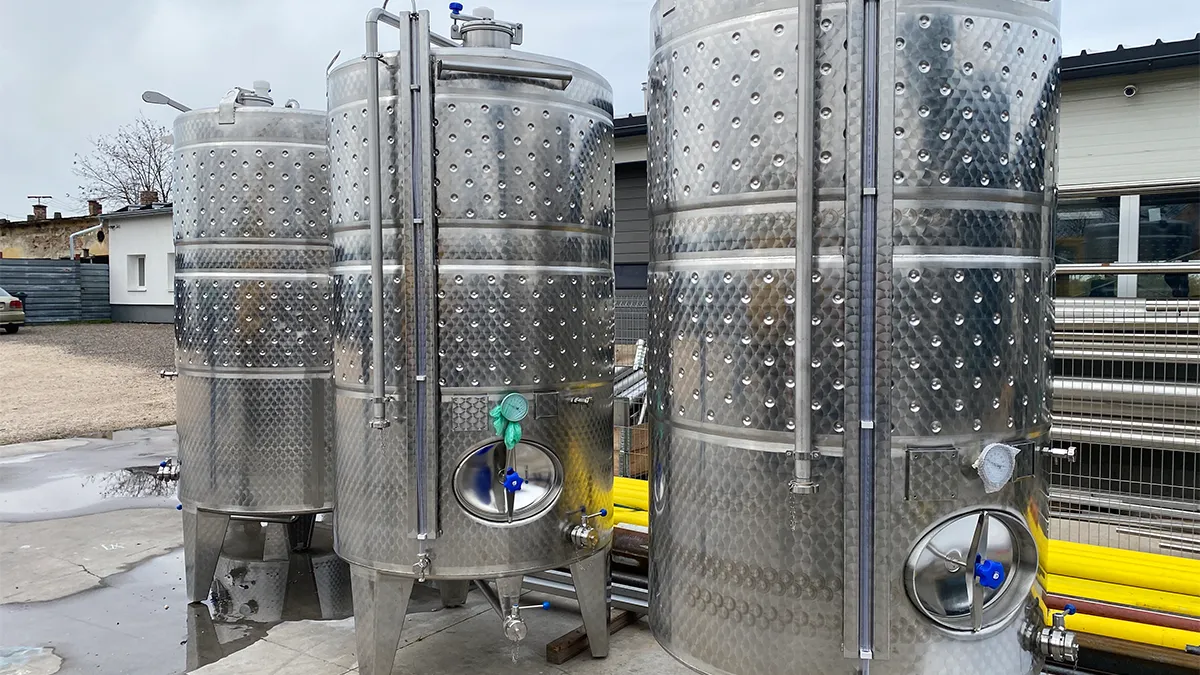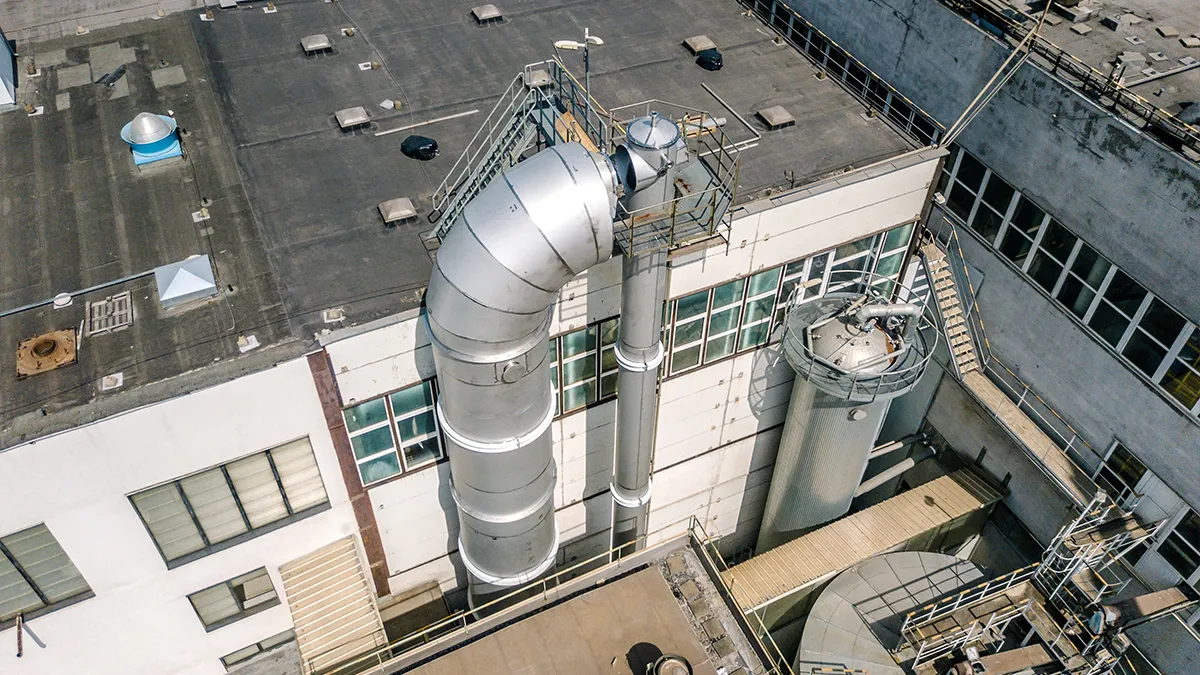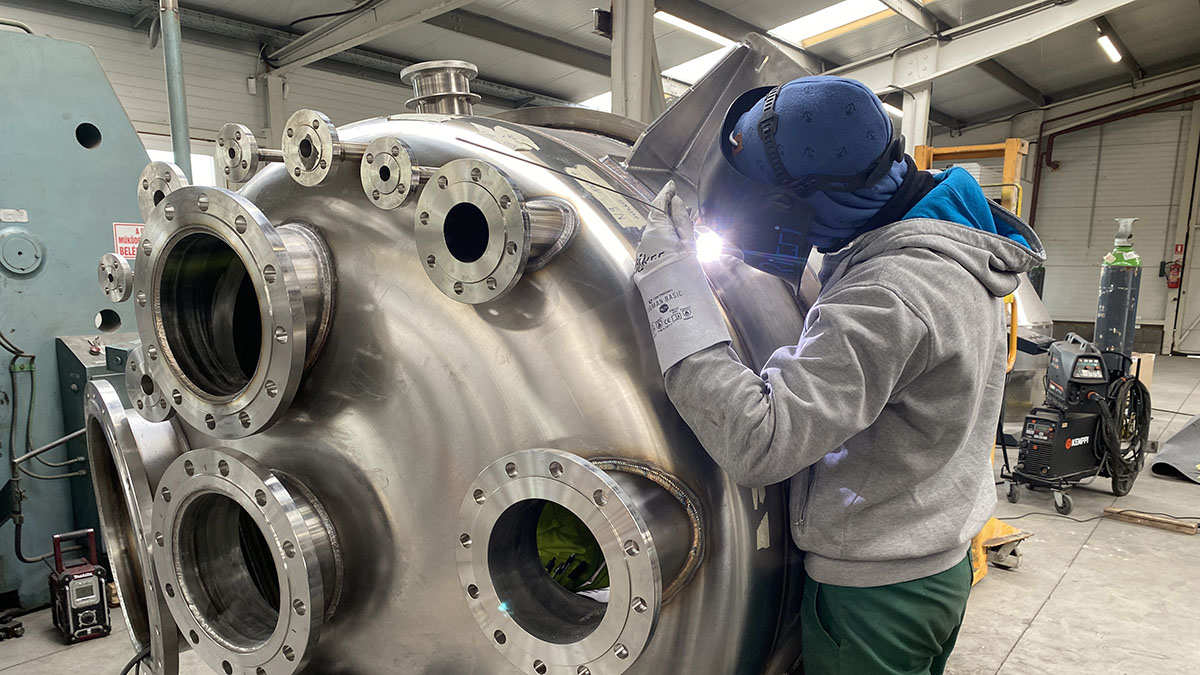
Choosing the right material is a key step in stainless steel tank manufacturing. Machinability and the type and duration of environmental exposure are two major factors that influence this decision. Common terms like stainless steel and acid-resistant steel are often used, though they actually refer to over two hundred different steel alloys. This article outlines the main differences between stainless and acid-resistant steel and explains when one may be a better choice than the other.
What is the difference between stainless and acid-resistant steel, and why are there over 200 types of stainless steel?
Steel has been protected from rust since its early use, with a major breakthrough in the early 1900s: adding chromium. This addition prevents rust from forming. A familiar example is the stainless steel sink found in most households.
Stainless steel is not just for sinks. It is used in many ways, so different materials are added to the steel to make it stronger or more resistant. That is why there are over 200 types of stainless steel today.
Stainless steel mainly resists corrosion caused by water. If the surface may come into contact with more aggressive substances like chemicals, acids, or alkalis, then acid-resistant steel is needed. This higher resistance is achieved by adding more alloying elements.
This means that all acid-resistant steel is also stainless, but not all stainless steel is acid-resistant.
Types of stainless steel
Based on their quality properties, stainless steels are grouped into four main categories:
- Austenitic steels: These are especially easy to work with, can be shaped well both hot and cold, and offer excellent corrosion resistance.
- Ferritic steels: Magnetic, easy to form both hot and cold, good machinability, and resistant to moderately corrosive environments.
- Martensitic steels: Can be hardened through heat treatment, easy to shape and polish, but suitable for welding only with special methods or not at all.
- Austenitic and ferritic (duplex) steels: Combine the benefits of both austenitic and ferritic steels. They require precise welding conditions but are highly suitable for tank manufacturing.

Custom-built, large-size duplex stainless steel tank
Key alloying elements in stainless and acid-resistant steels
Stainless steels are made from the four base types above, combined with various alloying elements. These additives enhance specific properties and performance, such as:
- Corrosion resistance: chromium, molybdenum, copper, silicon, nickel.
- Machinability: sulfur, selenium, lead, copper.
- Heat resistance: chromium, aluminum, silicon, nickel.
- Weld cracking resistance: manganese.
- Pitting corrosion resistance: molybdenum, silicon, nitrogen.
- Stress corrosion cracking resistance: phosphorus, arsenic, antimony.
Acid-resistant or stainless steel, which one should I choose?
Depending on the specific demands, the more than 200 stainless and acid-resistant steel alloys are made from different combinations of the stainless steel types and alloying elements mentioned above.
In stainless steel tank manufacturing, however, material selection can be narrowed down, tanks are typically made from four main alloys.
Stainless steel tank manufacturing for food and wine industry use
For food industry use, the most common choice is 1.4301 stainless steel (also known as AISI 304). Food-grade storage silos or wine fermentation tanks made from this alloy are ideal for storing food products, water, wine, soft drinks, or honey.

Custom-designed acid-resistant chemical tank manufacturing
Manufacturing acid-resistant tanks for harsh chemical environments
If next to water, other substances like raw materials, solvents, additives, acids, or alkalis are present, then acid-resistant steel is required.
Depending on the aggressiveness of the liquid, chemical storage tanks and agricultural tanks are made from either 1.4404 (AISI 316L) or 1.4571 (AISI 316Ti) acid-resistant steel. The specific grade is chosen based on the concentration of the corrosive substance. These two steel types cover almost all requirements in the chemical, paper, and agricultural industries.
Acid-resistant tanks for the most demanding standards
The material used for tank manufacturing depends on what will be stored and the rules of each industry. In the nuclear industry, the requirements are especially strict, so we use 1.4541 (AISI 321) stainless steel to make tanks for these applications.
What affects the price of stainless or acid-resistant tank materials?
The cost of stainless or acid-resistant steel used in tank manufacturing depends on two main factors: the cost of the steel and the alloying elements. The more alloying elements needed, the higher the price is, since steel manufacturers typically base their pricing on stock market rates. That is why precise material selection is important: every unnecessary alloy adds to the total cost.
High-quality stainless and acid-resistant steel tank manufacturing by Duna Steel Tech
We manufacture high-quality tanks for a wide range of applications, either based on ready-made plans or in close collaboration with the client, from design to production. Our engineers help select the most cost-effective material, wall thickness, and construction for the project.
